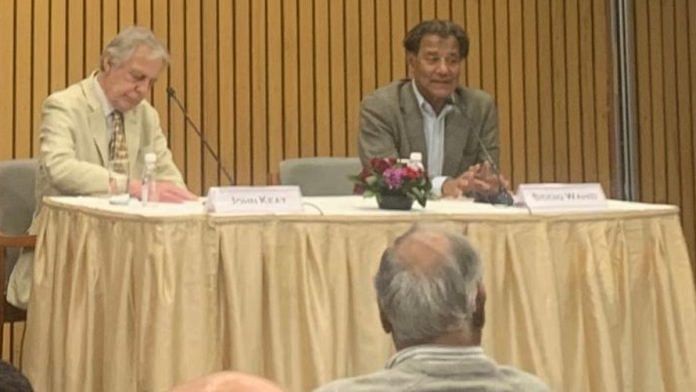Everest is over, declared British historian and writer John Keay as the audience at Delhi’s India International Centre listened in rapt attention. It is not every day, after all, that a Caucasian man lectures South Asians on the “Him-alay-aas” they feel so proprietary toward. But Keay was determined to offer a fresh perspective through his latest book, Himalaya: Exploring the Roof of the World.
“Scaling the world’s highest peak is no longer a redemptive experience,” Keay said at the 12 February book launch while skipping over the exploits of Edmund Hillary and Tenzing Norgay—the first mountaineers to summit Mount Everest in 1953.
“Corpses litter the way up to Everest. There is no effort to remove them. The world’s most revered mountain is littered with rubbish—plastic bottles, cigarette butts,” he said, attempting to shift focus from the world’s highest mountain peak to everything else the Himalayas have to offer, from mystery and sustenance to fascinating geographical anomalies.
Stupas, sherpas, and survival
The discussion was not just about Keay ringing warning bells and fulminating about the vulnerabilities of the Himalayas. Ingenious survival techniques and ice stupas were as much a theme as receding glaciers.
“These [ice stupas] are not glaciers but ice sculptures created in the depths of winter by spraying water from a high mountain lake onto a prepared surface. Water is made available just when newly sown crops need them,” 81-year-old Keay explained.
These ice stupas were built by engineer Sonam Wangchuk—who inspired Aamir Khan’s character in the 2009 Bollywood film 3 Idiots—in 10 Ladakh villages to tackle the water shortage induced by melting glaciers.
Keay spoke of this resourcefulness with awe, saying that people in the mountains can help themselves and others. Climbing a Himalayan peak is already a daunting task that few would dare undertake. But it would take forever without the skills of Sherpas.
Also read: Hridayesh Joshi’s Aitken ka Himalaya — ‘books are not translated, they find translators’
Decoding the ‘colonial experience’
A significant portion of Keay’s discussion focused on the experiences of colonial explorers. While besotted by the physical complexity of the Himalayan range, they were indifferent—if not skittish—to the beliefs of residents.
From demon worship, mystical encounters and worship of saints to their passion for pilgrimage and community building, there is much that Europeans could not understand about Himalayan denizens. Frederick Marshman Bailey, an East India Company agent based in Tibet, was, perhaps, the only unconfounded explorer on this list, becoming what Keay called “an authority on Tibetan pilgrimage” because of his thorough interaction with and observation of devotees.
Keay then showed attendees pictures of a white woman in traditional Tibetan attire. The woman was Alexandra David-Neel, a Belgian-French explorer and spiritualist who visited Lhasa in 1924, when it was out of bounds for foreigners. Alexandra was so entranced by the culture that she wrote several books on her time there, including Magic and Mystery in Tibet (1929). It is, perhaps, one of the earliest examples of Europeans ‘finding themselves’ in ‘the orient’.
After gripping the audience with lesser-known aspects, Keay returned to the oft-discussed development that is reconfiguring the Himalayas—China’s Belt and RoadInitiative (BRI). “It is not pretty. Modernity is dismembering the Himalayas.”
It didn’t take long for the discussion to skirt back to the Himalayas and their indescribable spiritual magic.
“I’m not susceptible to spiritual experiences, but I can see the extraordinary value the mountains have on life,” said Keay, who lives far from the magnificent Himalayas that shaped his decades-long career.
(Edited by Zoya Bhatti)



